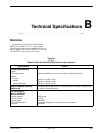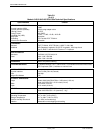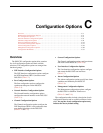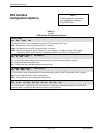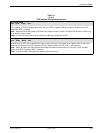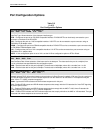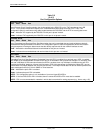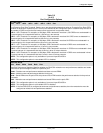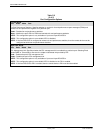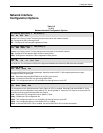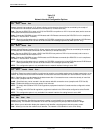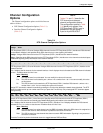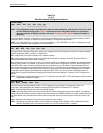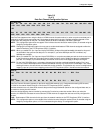
ACCULINK 316x DSU/CSU
C-6 January 1997 3160-A2-GB21-50
Table C-2
(3 of 5)
Port Configuration Options
InvertTxC: Disab
Next Enab Disab Prev
Invert Transmit Clock. Specifies whether the clock supplied by the DSU/CSU on the TXC interchange circuit DB
(CCITT 114) is phase inverted with respect to the Transmitted Data interchange circuit BA (CCITT 103). This
configuration option is useful when long cable lengths between the DSU/CSU and the DTE are causing data errors.
Enab – Indicates TXC supplied by the DSU/CSU on this port is phase inverted.
Disab – Indicates TXC supplied by the DSU/CSU on this port is not phase inverted.
InvrtData: Disab
Next Enab Disab Prev
Invert Transmitted and Received Data. Specifies whether the port’s transmitted data and received data are logically
inverted before being transmitted or received. This configuration option is useful for applications where HDLC data is
being transported. Inverting the data ensures that the density requirements for the network interface are met.
Enab – Indicates the transmitted data and received data for this port are inverted.
Disab – Indicates the transmitted data and received data for this port are not inverted.
EDL: Disab
Next Enab Disab Prev
Embedded Data Link. Specifies whether Embedded Data Link (EDL) is enabled for a particular port. If EDL is enabled,
then 8 kbps of the total bandwidth allocated for this port is not available to the synchronous data port. For example, if the
port rate is 256 kbps (4 DS0 channels allocated) and EDL is enabled, then only 248 kbps is available to the port. EDL
provides the following: detection of frame synchronization, CRC of the data stream (excluding the 8 kbps EDL), and an
in-band data link (4 kbps) between the local and remote units. The 4 kbps in-band data link can be used for performance
report messages and as an IP link for SNMP or Telnet sessions.
Enab – Indicates the port’s EDL is enabled.
Disab – Indicates the port’s EDL is disabled.
NOTE: This configuration option is only available on 2-port and 4-port DSU/CSUs.
NOTE: If the local DSU/CSU’s EDL is enabled, then the remote DSU/CSU’s EDL must also be enabled.
NOTE: EDL is not recommended for networks in which data is examined for routing purposes (e.g., frame relay, x.25).




